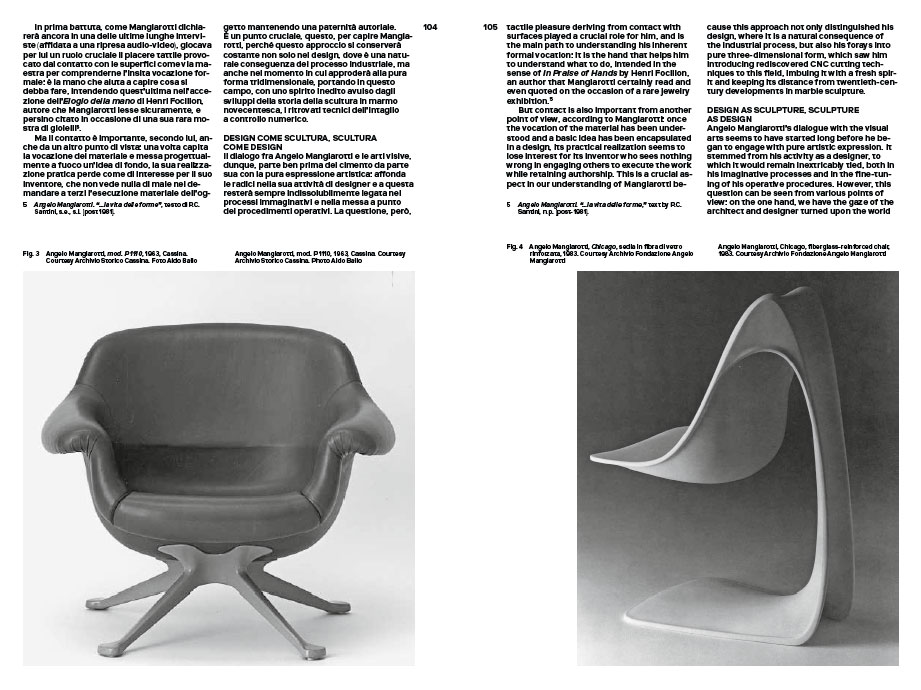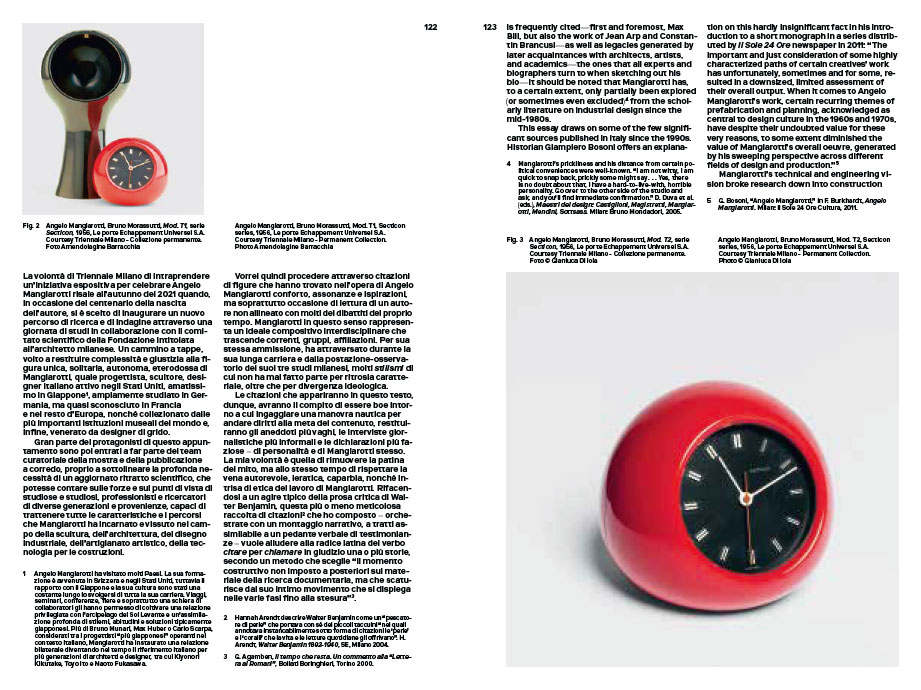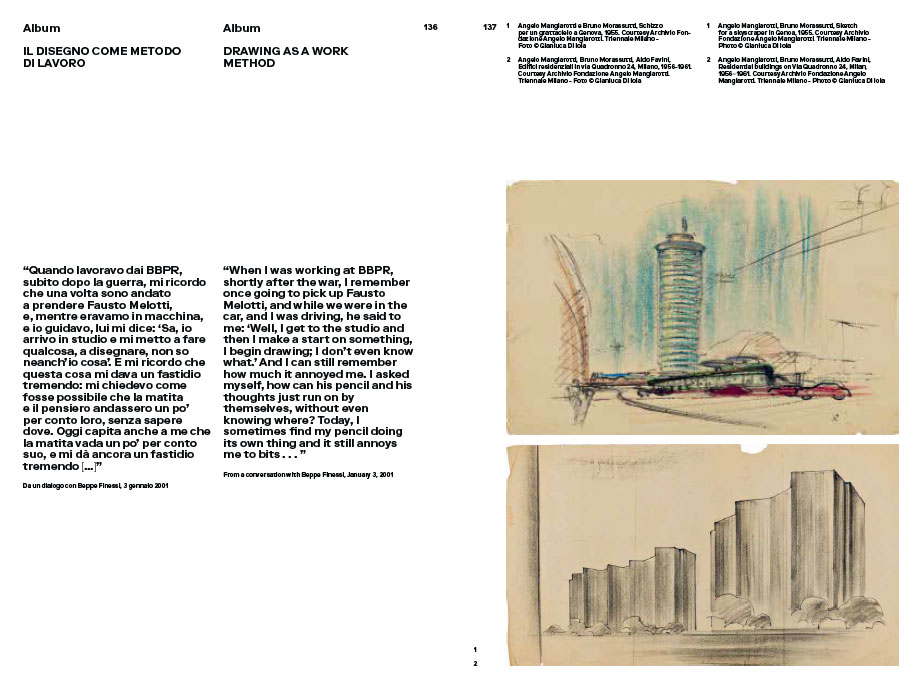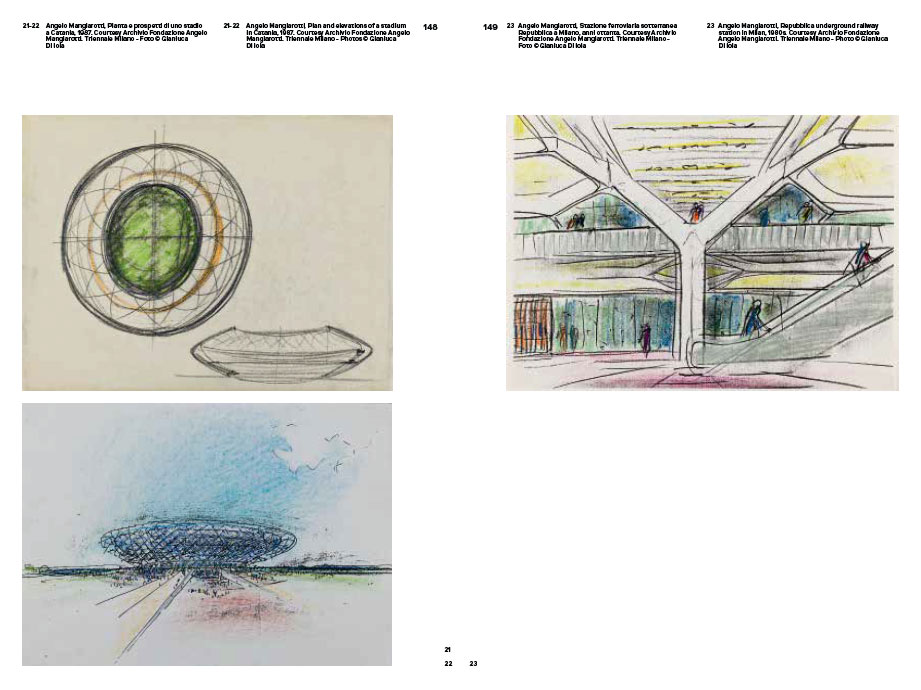The catalogue accompanies the exhibition of the same name at Triennale Milano (27 January – 23 April 2023). It reviews over sixty years of Angelo Mangiarotti’s achievement through a broad selection of works, projects, documents and previously unpublished materials accompanied by essays and testimonies by designers, intellectuals and his collaborators.
An architect, designer, and sculptor, Angelo Mangiarotti (Milan, 1921-2012) represents the ideal profile of the second-generation Milanese architect: a humanist and intellectual, cosmopolitan in his training and friendships, an academic and professional active in the field of architecture and design beginning in the 1950s, a fearless experimenter and innovator of the technique he strove to introduce within the intense debate inherent to his profession.
His biography partly reflects some traits typical of the generation that governed reconstruction and the Italian economic miracle; but it also expresses the heroic effort to give a face to industry, shaping a direct and innovative language of its workplaces and intervening in the material processes of production to achieve the poetry of unique and time-resistant objects.
The essays in this publication offer this grand master an opportunity to reclaim the complexity that for many years was removed from his reputation as a builder attentive to the process of material culture and to prefabrication techniques. In fact, if it is true that Mangiarotti supposedly reinvented the eternal archetype of the beam and the pillar, which, over the course of his lifetime, unfolded in an amazing array of variations, it is also true that his practice is characterized by great sculptural impact and expression, which lands him within the realm of art as well as architecture and design.
The catalogue contains contributions by: Francesca Albani, Giulio Barazzetta, Luisa Bocchietto, Enrico Bona, François Burkhardt, Beppe Finessi, Martino Gamper, Franz Graf, Motomi Kawakami, Tullia Iori, Fulvio Irace, Valentina Marchetti, Luca Pietro Nicoletti, Renzo Piano, Marco Ragone, Marco Sammicheli, Toshihiko Suzuki, Alberto Vintani.
Angelo Mangiarotti (Milan 1921 – Milan 2012) graduated in architecture from the Politecnico di Milano in 1948. In 1953- 1954 he worked in the United States taking part, among much else, in the competition for the Chicago Loop. During his stay abroad he met Frank Lloyd Wright, Walter Gropius, Mies van der Rohe and Konrad Wachsmann. On returning from the United States in 1955, he ran a practice in Milan with Bruno Morassuti until 1960. In 1989 he founded the Mangiarotti & Associates Office based in Tokyo. In 1953, Mangiarotti began combining his professional practice, whose works were published in books, specialist magazines and newspapers, with intense teaching at Italian and foreign universities. Mangiarotti’s design work, whose theoretical foundations were expressed in the book In nome dell’architettura (1987), sought to bring out the intrinsic features of each object, since only “objective” design is capable of avoiding oppressing its users to become collectively recognisable. His architectural vocabulary became the expression of a new relationship between humanity and the environment, while in his work as a designer Mangiarotti assigned a very important role to the study of sculptural research. The aim of his study, always conducted in strict compliance with the characteristics of materials, was the definition of the form of the object as the quality of matter.



